FLAT TIRE REPLACEMENT SERVICES
09985823718 028995261
Bulacan City
Transponder Key,
Key Duplication,
Trunk Lockout,
Car Lockout,
Ignition Repair,
Jump Start,
Flat Tire,
Immobilizer Key,
Key Programming,
Car Lock Repair,
Key Less Fob,
Cloning
No registration required.
365572 ads
We are one of the largest free online selling communities with thousands of active sellers.
305255343 views
Do you have something to sell? Your next sale might be just a few clicks away.
4.7 stars
Based from 898 member feedbacks. We value your suggestions and use it.
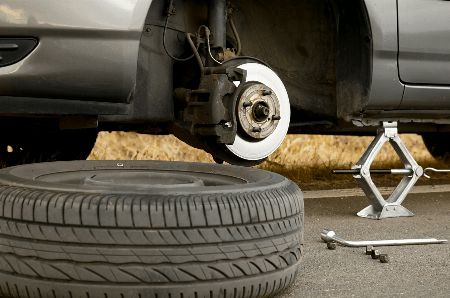

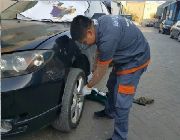
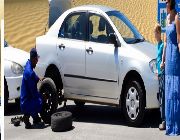
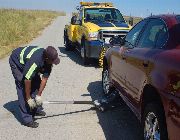

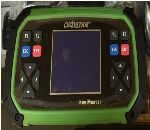
Our Traveling Tire Shop comes to your location at home, work, or roadside to provide full Tire Shop Service in Metro Manila by emergency or by appointment in advance. Call us now 09985823718 This eliminates the need to have your car towed when you have tire problems. Services available include Basic Tire Change, Flat Tire Repair, and Brand New Tire Replacement.
One common way to temporarily repair and re-inflate a punctured tire at the roadside is to use a canned tire sealant. The motorist attaches this to the valve, and the compressed propellant inside forces the can's contents through the valve into the tire, a liquid sealant is forced towards the puncture and will seal the puncture. The compressed propellant also inflates the tire. Typically, the sealant is a water based latex solution which can easily be removed by a tire repair professional before a permanent repair is made. Canned tire sealants are quick and simple to use and have the added benefit of working when the vehicle is in a dangerous location such as at the side of a busy highway, or on uneven ground.
A flat tire can be repaired by a patch or plug; or the tire may repair itself. Self-sealing tires work on punctures up to a certain size.
The patch repair is commonly used in a repair shop. Some may not patch a worn tire if: the hole is close to a previous patch, there are already more than two patches, the puncture requires more than two patches, the punctures are too close, and/or the puncture is close to the sidewall. A patch is performed by removing the tire, marking the puncture, scouring the surface to create a smooth surface (inside of the tire), applying rubber cement, applying the patch, then pressing it into the surface with a small metal wheel attached to a handle. An alternative is a combination patch and plug. This is manufactured with a plug built into it; applying this patch is done similarly except with more steps, including drilling a hole at the puncture so the plug can be pulled through it, as well as cutting off the excess plug from the outside the tire.
The final method, the tire plug, can be performed without removing the tire. The penetrating object is removed from the tire, and a plug coated in rubber cement then inserted with a handle, typically supplied with the kit. Many technicians consider plugs less reliable than patching though more reliable than sealant.
One disadvantage of patching a tire is that due to the process requiring one to remove the tire from the wheel, the tire must be balanced again when it is put back on the wheel. Tire sealant also creates an imbalance in the tire, but since it is a temporary repair, it is considered less of an issue. However, the issue of disposal of the tire sealant, the hazards to the technician, as well as the required cleaning of both the inside of the tire as well as the wheel could all be considered disadvantages of tire sealant.
Tires can leak air for a variety of reasons. These include, but are not limited to: damage to the wheel itself, a damaged valve stem, a puncture in the tire (which can be hard to find if the puncturing object didn't embed itself in the tire) and improper installation of the tire, which could involve the bead of the tire being cut when installed with excessive force.
Occasionally, a puncture may not "go all the way through" to the inside of the tire. Thus, before coming to the conclusion that a puncture is causing air to leak from the tire, attempt to remove the puncture lightly by hand. It's very possible that the head of a nail or a very short nail created the appearance of a puncture, while not actually being one.
Also worth mentioning is the fact that tires simply lose air over time. A brand new tire, properly inflated, will lose air even with no punctures present. This is mainly due to the design of the valve stem, among other reasons. Given enough time, a tire can fully deflate with no outside intervention.
This seller has been a member since: Nov. 08, 2018
Member Location:
Total Classifieds: 11
Why seller feedback is important?
Transact with most credible & reputable sellers
Know the seller you are going to deal with
Claim warranty long after purchasing the item
Warn you and other buyers against scams
Motivates sellers to provide good service